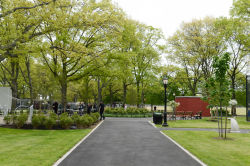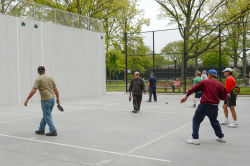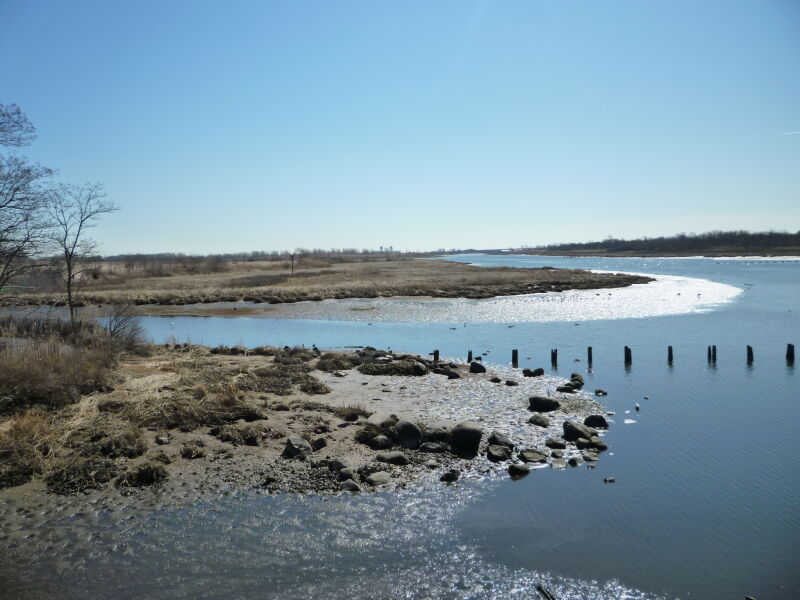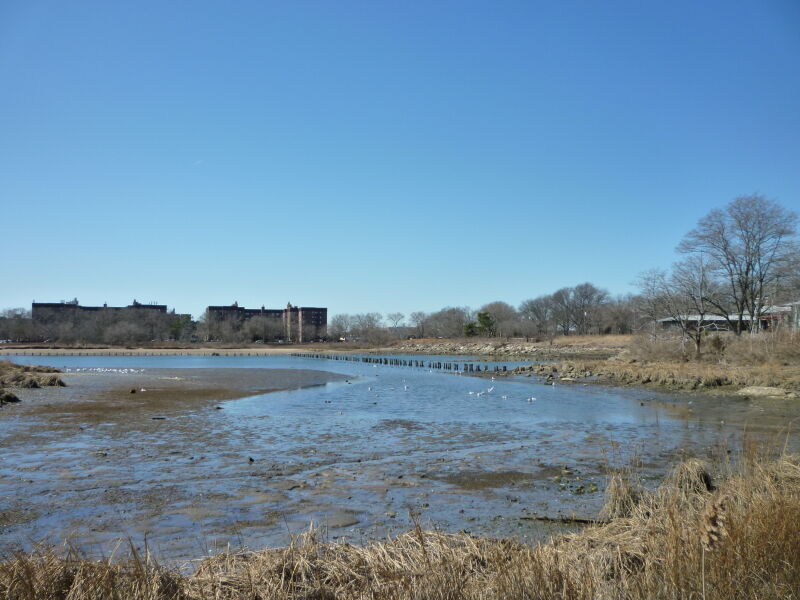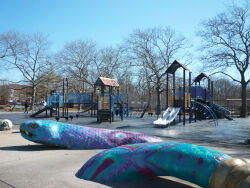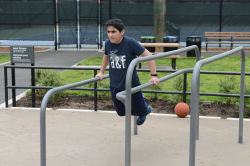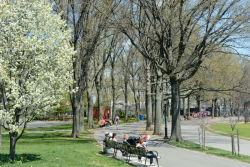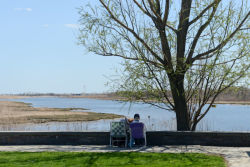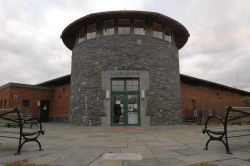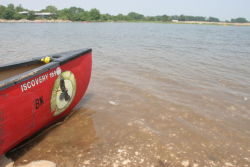Marine Park
The Daily Plant : Tuesday, December 2, 2003
SHHH…DON’T WAKE THE OPOSSUMS!
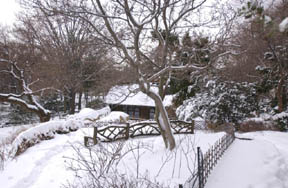
Each season as the temperature get colder, New Yorkers and holiday tourists bundle up in wool coats, hats and gloves and head to the neighborhood deli for a cup of soothing chicken soup. Some folks even fly to sunnier climates to avoid shoveling snow. But, as winter sets in, many of the animals in our parks must find more creative ways to cope with the cold weather.
From November to March, the opossums, bats, skunks, frogs, turtles and other animals host their own wildlife slumber party to survive the rough elements. Hibernation is a unique process that highlights the incredible ability of mammals and reptiles to adapt to their surroundings. When the weather gets colder, the food supply of vegetation, seeds, nuts, and insects for many of the animals in our parks becomes scarce. To compensate, some of these animals hibernate or slow their metabolic processes so that they require less energy to survive.
The groundhogs, mice and bats that live in our parks are true hibernators because their body temperature drops to within a few degrees of the outside temperature and their heart rate and respiratory rate also dramatically drop. Raccoons, opossums, and skunks are not true hibernators. Although they go into a prolonged sleep and their heart and respiratory rates decrease, their body temperature stays constant. These mammals all find places within the park to doze during the winter months. Groundhogs, mice and skunk winter in little holes underground, and opossums and raccoons seek shelter in tree cavities.
While you can see tracks of the animals if you look closely, it is rare to see a hibernating creature out in the open. But, the sleepy animals do make rare winter public appearances. "It’s kind of like a wake-up, they come out, get rid of the toxins that are building up in their system and then go back to sleep," said Yvonne McDermott, Wildlife Manger of the Urban Park Rangers.
Reptiles, such as turtles, snakes and amphibians are true hibernators and have also adapted ingenious ways to deal with harsh winter conditions. Unlike mammals, these creatures are ectothermic, meaning that their internal body temperature matches the ambient temperature. These animals hibernate because they need a warmer outside temperature to run their metabolic processes.
Resourceful reptiles find unusual places to nap for the winter. Terrestrial turtles, terrestrial toads, and snakes hibernate in the crevices of rocks and trees. Salamanders burrow into the leaf litter below the frostline. Aquatic turtles create a small chamber called the hibernaculum. These turtles sleep in the hibernaculum under the water in the mud for months until springtime. Aquatic frogs such as Leopard frogs and American Bullfrogs need the oxygen found in the water bodies so they hibernate in the space between the muddy bottom of the water body and the water itself. When the temperature gets too cold and the water freezes, the frogs freeze too, but they do not die. Instead, these frogs "thaw out" and "come back to life" in the spring.
Although the hibernating mammals and reptiles in our parks are usually out of sight until spring, winter does bring new types of birds to the lakes and ponds in our parks. These birds are known as "winter migrants" and they travel here to escape the harsh elements of colder locations. Ducks such as the Widgeon and Bufflehead and small geese like the Brant and the Snow Goose fly down from Canada to spend their winter in the City. New York City is their "Florida." Keep your eye out for the visiting birds as they search for fish and vegetation on the larger water bodies in parks across the city. The small geese seem to be especially fond of vacationing in Gerritsen Creek by the Salt Marsh Nature Center in Brooklyn’s Marine Park.
Written by Jocelyn Aframe
5TH ANNUAL CENTRAL WEP GIFT DRIVE
Do you want to make a child very happy this holiday season?? Then be a part of the 5th Annual Central WEP Gift Drive!!
Based on the huge success of previous efforts, we are once again organizing a gift drive to collect holiday gifts for the children of Parks Work Experience Program (WEP) participants. WEP participants make significant contributions to parks and this gift drive is our chance to show our appreciation and support during the holiday season.
If you are interested in donating a gift, please e-mail or call Chris Chapman or Eva Charles, (212) 830-7732. You will be matched with a child's request to help guide your gift selection.
QUOTATION FOR THE DAY
"Dreams are necessary to life."
Anais Nin
(1903-1977)
Check out your park's Vital Signs
Clean & Safe
Green & Resilient
Empowered & Engaged Users
Share your feedback or learn more about how this park is part of a
Vital Park System

